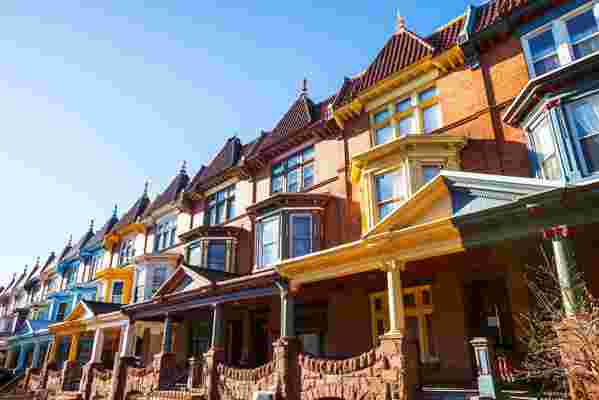One year ago, my husband fulfilled one of my wildest dreams in the worst possible way. He bought me a home in Baltimore City.
Bruce is a U.S. Naval Academy graduate and an Eagle Scout. I am a two-time James Beard Award–winning journalist and author, known for my dedication to historic preservation. (I have rescued more than 400 Black cookbooks, many of them rare, dating to 1827.) So, when a new job called us to the Mid-Atlantic, we could not resist the allure of its lush green spaces, the Chesapeake Bay, and, of course, its affordable pockets of spectacular architecture.
For us, repurposing is a way of life, whether we are restoring an old Victorian home or accessorizing new construction with reclaimed wood, salvaged hardware, and primitive stone. We gave new life to a vacant center-hall colonial in Shaker Heights, Ohio, by updating its two-in-one kitchen—half the appliances were for kosher cooking, the other half for everyday meal prep. We raised our kids in Austin, Texas, in a new, semi-custom home that we outfitted with a flagstone façade, iron front doors, and slate floors. And we planned to retire in the custom home we built on the fourth fairway in Aurora, Colorado. The kitchen was the centerpiece of that house, with its large island, topped with Rain Forest Brown marble leathered with a rough, hand-chiseled edge, and a stacked slate backsplash.
Along the way, I founded a 501(c)(3) nonprofit organization dedicated to restoring a historic house as a community space where celebrating cultural cooking could spur racial reconciliation. We considered all of this as we contemplated our options, from the rolling hills of Maryland to the quaint villages of Virginia.

A typical street view of the colorful row homes that characterize Baltimore's historic Charles Village.
But Baltimore City? Who would believe it possible to comingle suburban fantasies with urban renewal and race tolerance? We did, it turns out. Seduced by the movement to revitalize Baltimore and the charms of Charles Village, we purchased one of its “Painted Ladies” at auction.
Charles Village is a “distinctive historic district,” according to the National Register of Historic Places. It is located within the boundaries of Baltimore City and encompasses about 45 blocks. Johns Hopkins University, Baltimore Museum of Art, Wyman Park, and several regal churches are located here. The majority of its residences, known as the Painted Ladies because of their brightly colored exteriors, are row houses built between 1895 and 1915.
Classic architectural elements ornament the homes. These include pedimented front porches, bowed fronts, bay windows, Dutch gables, pyramidal and conical roofs, small balconies and stained glass windows and transoms. Most of the housing is set back from the street. Many of the small front yards are well-landscaped, accented by perennials, from fragrant rose borders to ferns, hostas, lilies, and magnificent bearded iris. Oak trees, Japanese maples, and crepe myrtles line the streets. Ours is one of several yards anchored by an ancient fig tree.












